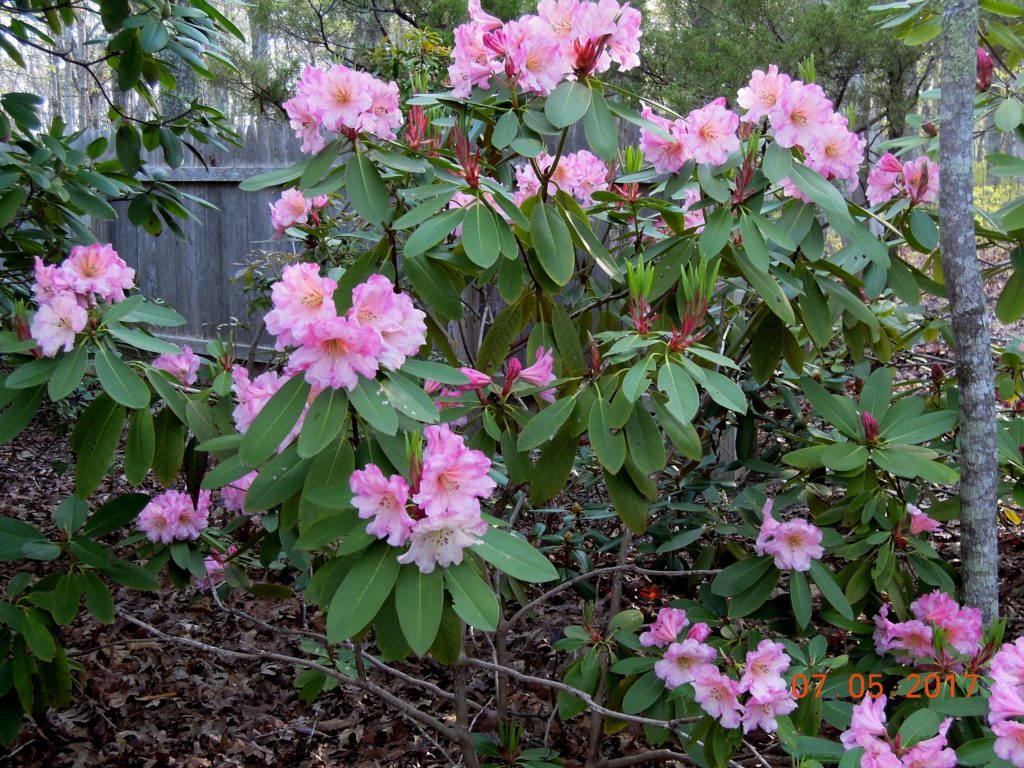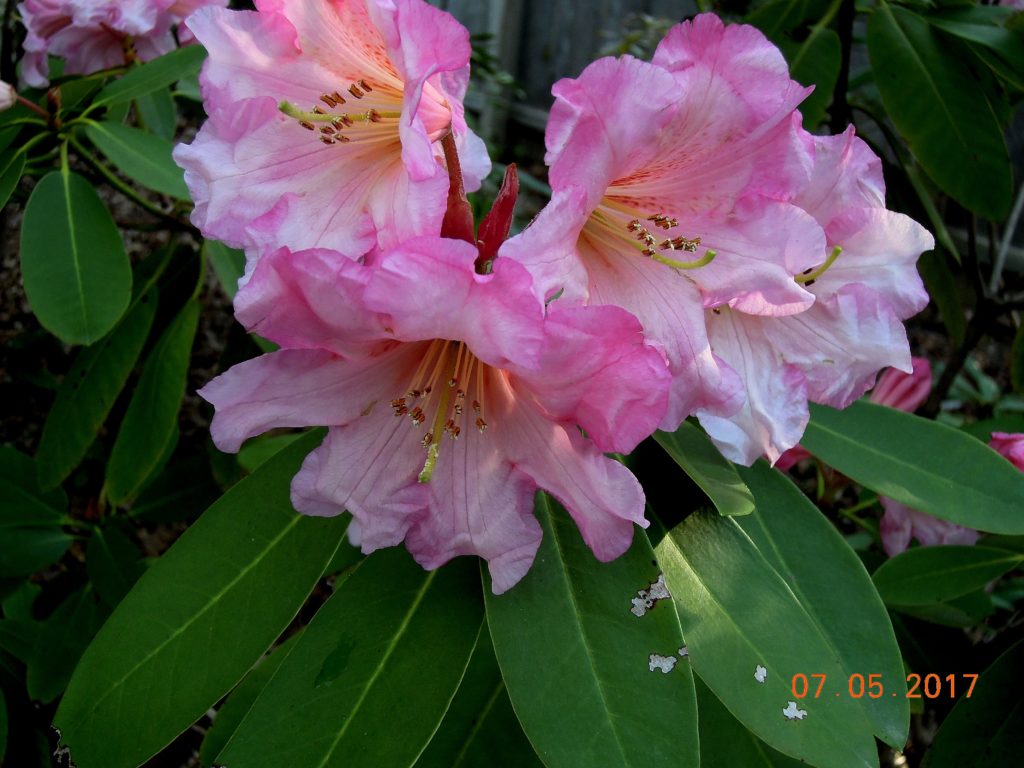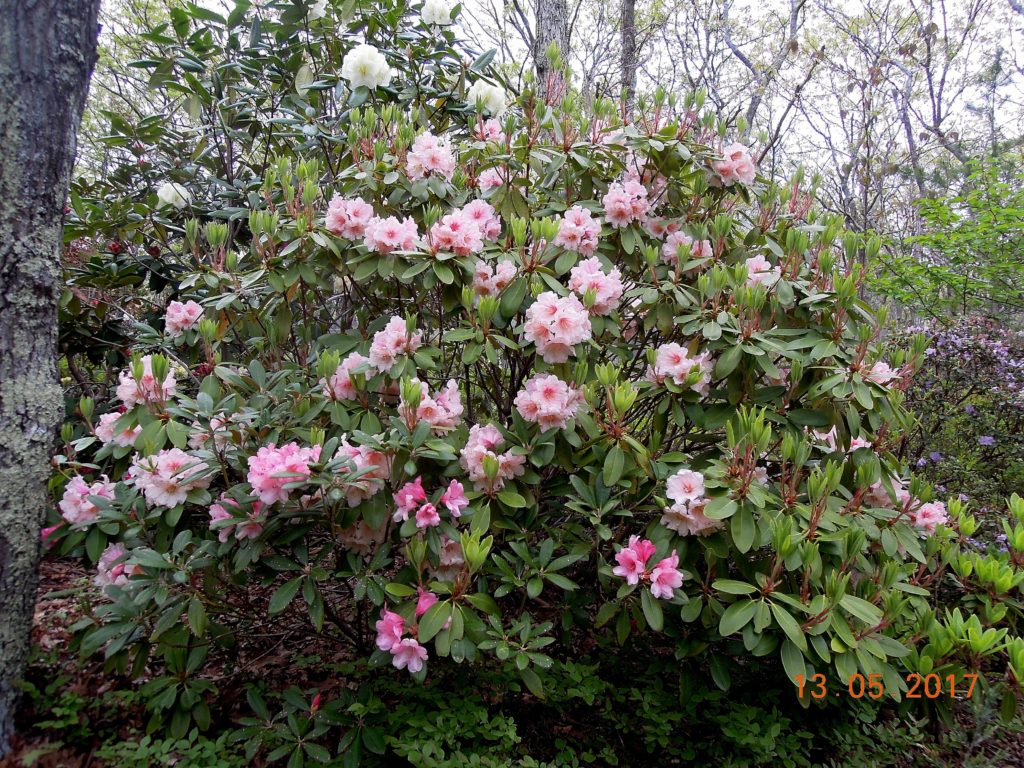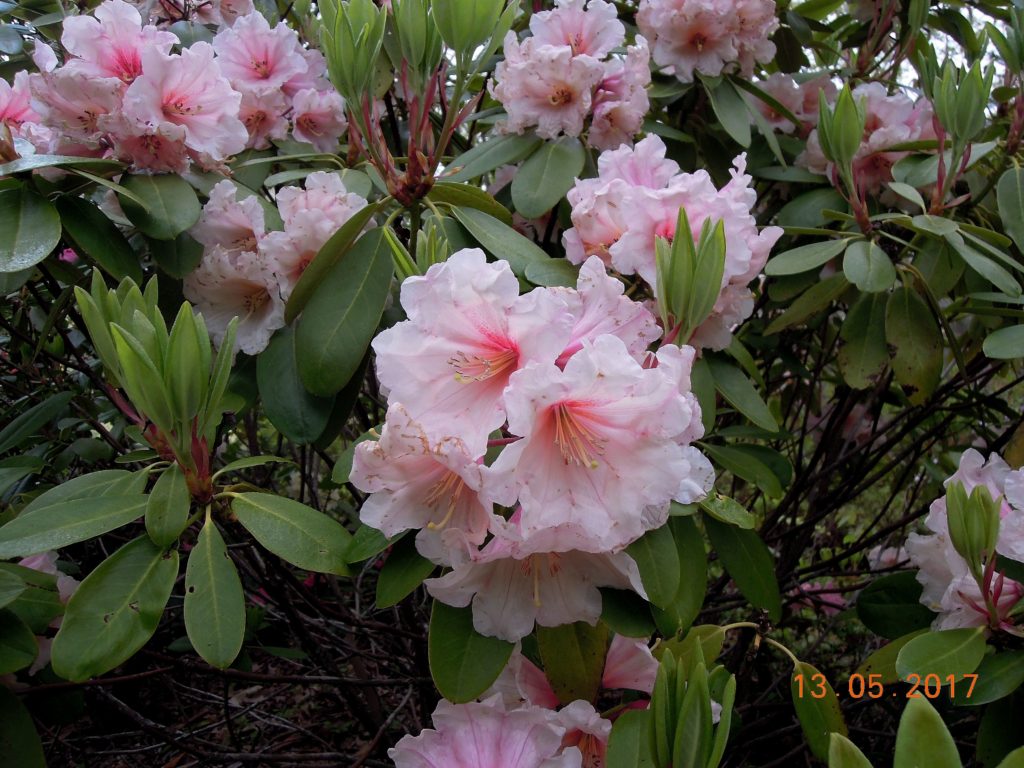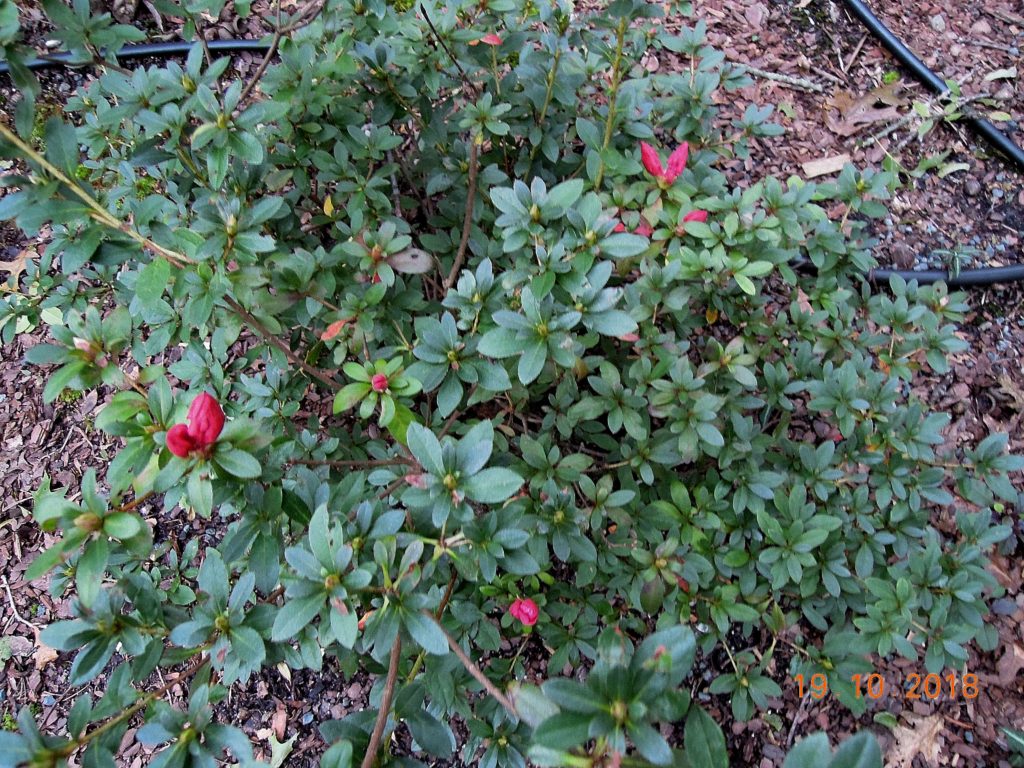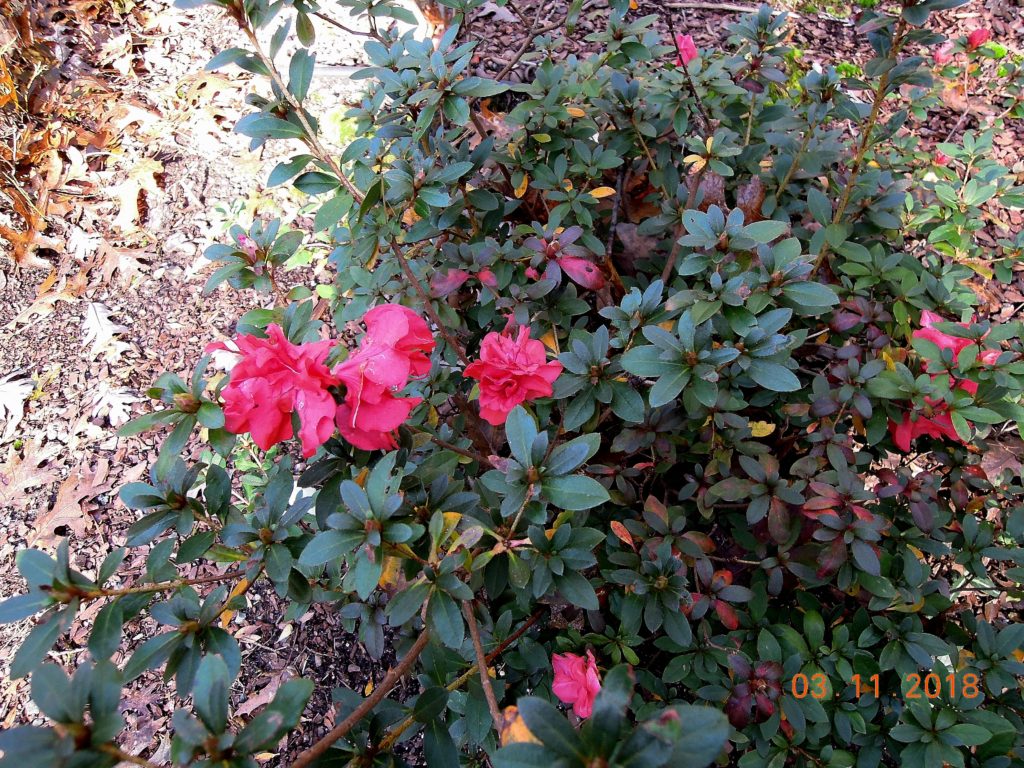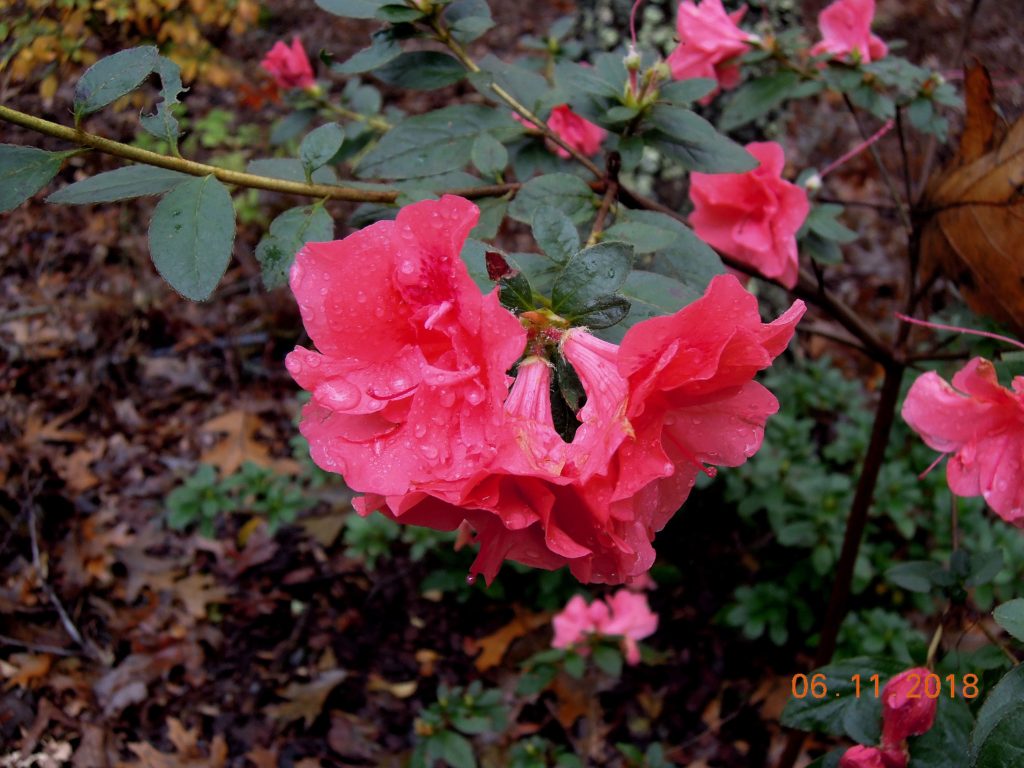Wow! I was reading an illustrated article about the gardens at Winterthur when I turned a page and there, strutting her stuff, was one of my favorite plants: Rhododendron ‘Winterthur-Dexter #7’. Quite a beauty! (“Azaleas and Rhododendrons at Winterthur,” JARS Vol.72, Number 4, Fall 2018, pp. 179, 180.)
A beauty with a history: Acquired in the 1930’s by H.F. du Pont for his private estate at Winterthur, #7 arrived in a flat of unnamed seedlings from acclaimed plant breeder Charles O. Dexter. The seedlings were tagged with numbers and in 2004 a cutting of #7 was acquired by me at a Rhododendron Convention plant sale. It took a long time to mature and bloom but worth the wait. Photos below. (For more information about Dexter, Winterthur and #7, see post of “June 2016: Rhododendron Razzle Dazzle”.)
R. ‘Mount Siga’ is another prized Rhododendron with an interesting provenance. Joseph Gable propagated the plant from wild seed collected in China in 1929 and introduced it into commerce in 1979. I purchased a small plant in 2006 from Rarefind Nursery and it bloomed the following year. Flowering at a young age is not its only asset. My mature Mount Siga is a winter-hardy (-10 F), disease-free, handsome, impressive, 6-foot mound-like shrub. The large-leafed foliage is evergreen and the pink flowers in May are abundant and exquisite. Truly a plant with four seasons of interest. Photos below.
[Note: While choice Rhododendrons like #7 and Mount Siga are currently difficult to find in commerce, they may turn up at Rhododendron and Azalea Society Chapter plant sales. And there will be a plant sale at the 2019 ARS Convention; I’m told that the final plant list for the sale may be available in March.]
March 2019 Addendum: I’m now informed the list will be available April 1.
This Fall a number of my Spring-blooming Rhododendrons have been duped into bloom by warm weather, compromising Spring flowering. Worse still, if dormancy is delayed, it may affect the hardiness and health of plants like the evergreen Azalea, Rhododendron ‘Chipmunk.’ Photos below.
Many broad-leafed evergreens, like Rhododendrons, are not entirely photoperiodic — i.e., dependent on shorter days to trigger dormancy. These plants are also sensitive to temperature change. (Yet, an alternative theory, proposed anonymously, suggests that R. ‘Chipmunk’ et al. force their buds to open in the Fall because they suffer from green envy. Well, my evergreen Azaleas R. ‘Marshy Point’s Humdinger’, R. Bloom-a-Thon Pink Double, and the Encore Azalea R. Autumn Sunburst (aka R.’Roblet’) are bred to bloom in Spring and Fall — and they do tend to flaunt it.)
In the past I’ve planted an army of Encore Azaleas. None survived their first winter. So I’m happy to report that this is Encore Azalea Autumn Sunburst’s third year in the garden. The Azalea is winter-hardy (Zones 6-9) and it’s a reliable bloomer, producing yummy coral-pink flowers in Spring and Fall. An Encore I can safely recommend. Photo below.
Finally, we will be celebrating Thanksgiving next week. Here is my I’M THANKFUL SHORT LIST:
I’m thankful for my family.
I’m thankful for my organic garden and the wildlife it supports. (Except for voles and ticks. A pox on them!)
I’m thankful that the Democrats won the House. (A good beginning. A very good beginning.)
HAVE A WONDERFUL THANKSGIVING!
